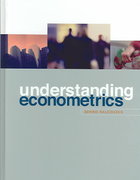Econ 393 Winter 2020 Assignment 1 The assignment is due in class on Monday, January 27'\". Answer each of the following questions. You must provide justification to receive marks. Students may collaborate in solving the problems but must individually write up their answers. Question 1. A consumer has preferences over expenditure on food (X1) and money spent on other goods be) represented by ii) vi) U(x1,x2) = xigls (CD with a = 1/5) Derive the ordinary demand functions X1(p1 , I) and X2(p1 , I) if the price of food is p1 and the consumer has disposable income I per period. Note that X2 is a composite good so we take p2 =1. Derive the compensated demand functions for food and all other goods, h1(p1 , u) and h2(p1 , u) given some constant value for the utility level u, by solving the expenditure minimization problem. Assume the consumer's disposable income is I = $1000/period. What is the consumer's utility maximizing choice (X1, X2) if p1 = $20/unit? What about if p1 = SS/unit? In a graph, represent the price effect (AX1) of the change in price p1A= SZO/unit to p1B = SS/unit. Calculate and show the substitution effect in the same graph using the compensated demand functions to make the calculations, and a sketch of the relevant indifference curves. In a second graph, sketch the (inverse) ordinary demand curve (price on vertical axis, quantity demanded on the horizontal) using quantity- price pairs arising from p1A = $20/unit and p1B = SS/unit assuming that the consumer's income remains at I = $1000/period. Add the compensated demand curve to your sketch in v) and illustrate the substitution and income effects. Use only the qualitative properties (as given by the Slutsky Equation) that relate the compensated and ordinary demand curves as they pass through the point (x1(20,1000), 20). Question 2. A firm has the following production function where output (x) depends only upon the number of labour hours per week (i), x=f( i) = 2(:+4)1/2 - 4 i) Sketch the production function in a graph with labour input measured horizontally, and output measured vertically. ii) Use the production function to find an expression for the labour required to produce a level of output x. Next, find the cost function assuming there is no fixed cost. iii) Suppose the output price is p and the wage is SlO/hr. Derive the output supply function. iv) If there are 20 identical firms, what is the market supply function? v) Suppose we can model the entire group of households using a representative consumer with preferences represented by U (x, y) = (50,000) lnx + y, for the industry's good x, and expenditure on all other goods, y. The consumer's exogenous income M is adequate to ensure an interior solution at any reasonable price for x. Find market demand function, D\" (1)). vi) Find market equilibrium price and quantity traded. vii) Sketch the market equilibrium and graphically illustrate CS and PS in a graph with quantity measured horizontally and price measured vertically








